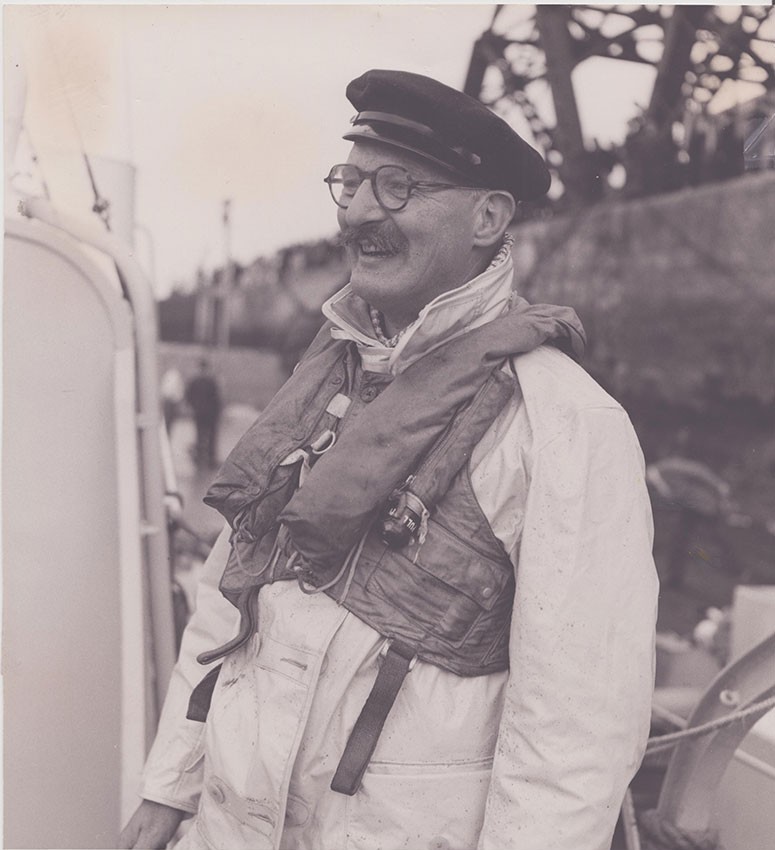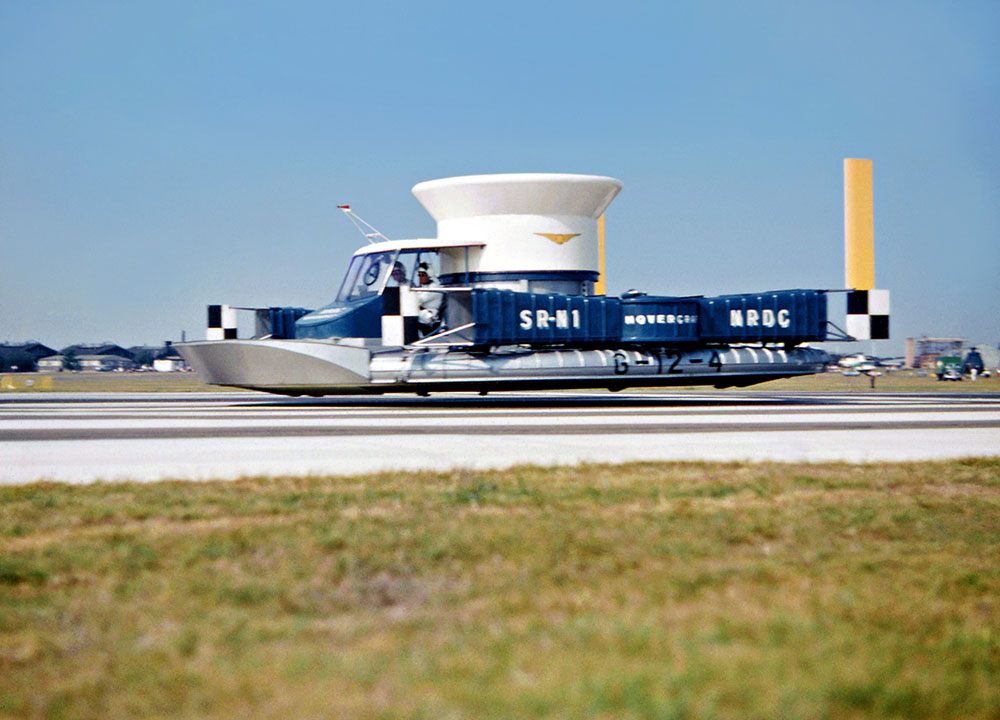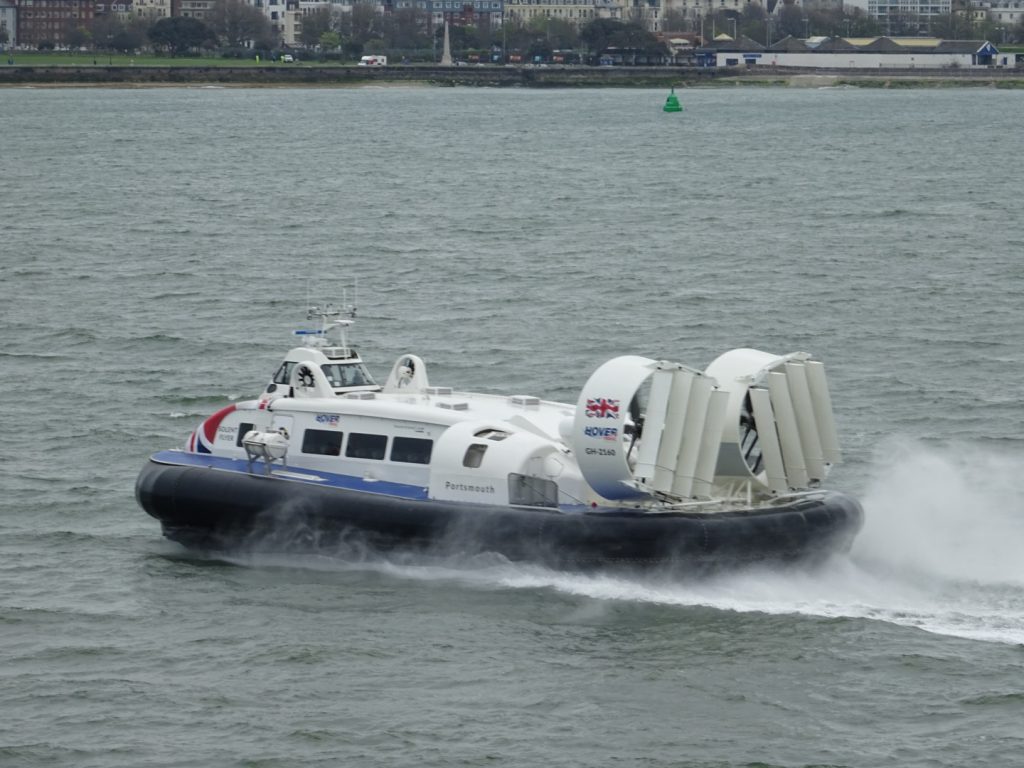 The “hovercraft” is a word and an invention that Dr Christopher Cockerell patented in 1954 after working for Marconi, where he helped to invent radar. Aware of D-Day and Normandy landings he thought about how to get troops dry-shod and safe up a beach fast. In his Norfolk boatyard he later put his mind to this problem and set up Ripple Craft. By placing two tins one inside the other and reversing the connections on a hair-dryer he was able to show that annular jets of air form an air cushion to reduce friction and enable boats to travel faster. By 1958 the SR-N1 was being built with Government support and this “boat” was suddenly fully amphibious, unlike predecessors such as John Thornycroft’s attempt to make a boat move on an air cushion in 1897.
The “hovercraft” is a word and an invention that Dr Christopher Cockerell patented in 1954 after working for Marconi, where he helped to invent radar. Aware of D-Day and Normandy landings he thought about how to get troops dry-shod and safe up a beach fast. In his Norfolk boatyard he later put his mind to this problem and set up Ripple Craft. By placing two tins one inside the other and reversing the connections on a hair-dryer he was able to show that annular jets of air form an air cushion to reduce friction and enable boats to travel faster. By 1958 the SR-N1 was being built with Government support and this “boat” was suddenly fully amphibious, unlike predecessors such as John Thornycroft’s attempt to make a boat move on an air cushion in 1897.
Soon after Sir Christopher Cockerell’s idea literally took off. Ship and
aircraft builders alike were soon making amphibious all-terrain vehicles that hovered over land and water. With Sir Christopher strapped to the bow to provide stability the SRN1 flew the English Channel from France to England soon after its launch, and it paved the way for giant car carrying craft within ten years. The Sixties and Seventies saw hovercraft develop worldwide with gas turbines and riveted aircraft technology and prove themselves as true amphibians in many new roles. By the end of the decade the fuel crisis saw the doubling of running costs and hovercraft became less cost effective. Fortunately in the 1980s with new cost-effective craft running on diesel and constructed with welded aluminium hulls, the hovercraft re-established itself. Most of the places they were needed were areas with less developed infrastructure and were the poorer regions of the world. It is only in recent times that these less developed countries have been able to afford these new craft that they need for multiple transport tasks.
amphibians in many new roles. By the end of the decade the fuel crisis saw the doubling of running costs and hovercraft became less cost effective. Fortunately in the 1980s with new cost-effective craft running on diesel and constructed with welded aluminium hulls, the hovercraft re-established itself. Most of the places they were needed were areas with less developed infrastructure and were the poorer regions of the world. It is only in recent times that these less developed countries have been able to afford these new craft that they need for multiple transport tasks.
By 2000 the British patents on most hovercraft had lapsed and suddenly anyone could build and buy craft without 10% going to the UK treasury. In recent years hovercraft have enjoyed a renaissance and there is now a £30 million industry in the UK alone.
 Today most countries have a hovercraft somewhere and many militaries and coastguards use them daily. Whilst few are used presently in passenger role this is a potentially enormous re-emerging market and so hovercraft are enjoying a come back. In the USA around 100 hundred tonners are being built to replace and accompany the older military craft!
Today most countries have a hovercraft somewhere and many militaries and coastguards use them daily. Whilst few are used presently in passenger role this is a potentially enormous re-emerging market and so hovercraft are enjoying a come back. In the USA around 100 hundred tonners are being built to replace and accompany the older military craft!
Hovercraft are here to stay and our museum shows off a half century of innovation in design with professional and amateur builds of this great British invention!
The hovercraft has a variety of names: aeroglisseur in France, Luftkissenboot in Germany, ground effect machine in the USA, surface effect ship, skimmer or air cushioned vehicle (ACV), and the Hovercraft Museum is the only museum in the world dedicated to showcasing this unique invention.
